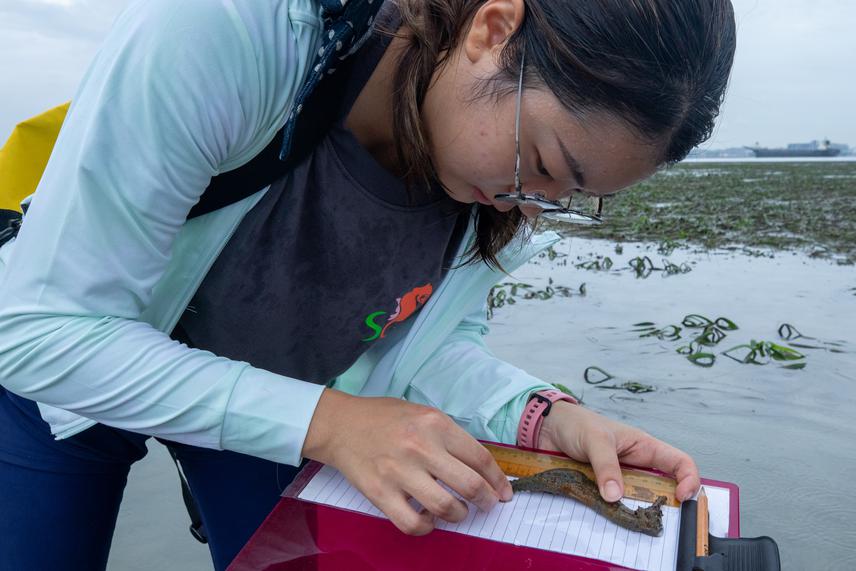Wong Jieyi
The family Syngnathidae includes about 300 species of syngnathids such as seahorses, pipefishes, seadragons, and pipehorses. Of the syngnathids, seahorses (genus Hippocampus) are the most well studied group, with the most threatened genus in the family. Seahorses are widely captured for the aquarium trade and traditional Chinese medicine (TCM). This has caused significant population decline. Malaysia, a country with significant seahorse trading, faces conservation concerns and responsibility under international trade agreements due to overfishing. There are 12 species of seahorses found in Malaysia; seven of them are categorized as "data deficient" and the remaining five species are designated as "vulnerable" by the IUCN Red List of Threatened Species. Among all the seahorse species, the vulnerable common seahorse (Hippocampus kuda) is heavily exploited due to its “claimed” high nutrients and medical value. Additionally, their fragile habitat, the sea grass meadow, faces decimation from urban development, specifically ocean sprawl, which further threatens the seahorse population.

The involvement of volunteers in protecting seahorses and their habitat through the our project. ©Leh Kah Meng.
One of the largest seagrass meadows in Malaysia is the Merambong Shoal, which is situated at the western end of the Straits of Johor. It is located between the heavily urbanized Forest City, Johor, and Tuas, Singapore. Currently, little research has been done on the extent of the H. kuda population at Merambong Shoal, and there is a lack of data on the interaction between seahorses and seagrass in Malaysia. Although one tagging study on seahorse in the area was carried out from 2007 to 2014, the study only covered a certain part of the seagrass bed and was not continued. Furthermore, the collected tagging data was not analysed. The change in the population baseline of H. kuda (if any) before and after the development in Southern Johor (between 2014-2022) is unknown. Therefore, it is crucial to restart the project to monitor the impact of urban development on the ecosystem of Merambong Shoal. This can be achieved by understanding the current status of both H. kuda and the seagrass at the shoal. Additionally, there is currently no known strategy for conserving seahorses in Malaysia and this project provides essential baseline data to refer to for seahorse conservation in the country. This study aims to evaluate the H. kuda population at Merambong Shoal by conducting monthly field population surveys and seahorse tagging methods.

Measuring the size of seahorse with a ruler. ©Scott Patrick Nishiki.
Header: A female seahorse spotted clinging on seagrass at Merambong Shoal, Johor. ©Leh Kah Meng.